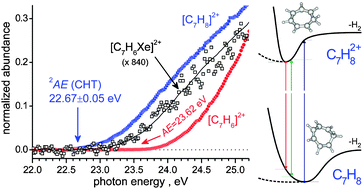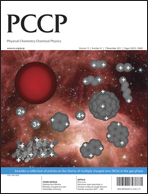*
Corresponding authors
a
Department of Physics, University of Trento, Via Sommarive 14, 38123 Povo, Italy
b
Institute of Organic Chemistry and Biochemistry, Academy of Sciences of the Czech Republic, Flemingovo náměstí 2, 16610 Prague 6, Czech Republic
c
Laboratoire de Dynamique, Interactions et Réactivité, UMR 7075 CNRS/UPMC, Université Pierre et Marie Curie, 4 Place Jussieu, 75252 Paris Cedex 05, France
d
J. Heyrovský Institute of Physical Chemistry, Academy of Sciences of the Czech Republic, Dolejškova 3, 18223 Prague 8, Czech Republic
e
Laboratoire de Chimie Physique, Bât. 350, UMR 8000, CNRS – Univ. Paris-Sud 11, Centre Universitaire Paris-Sud, 91405 Orsay Cedex, France
f
Synchrotron SOLEIL, L'Orme des Merisiers, Saint-Aubin – BP 48, 91192 Gif-sur-Yvette, France
g
University College London, Department of Chemistry, 20 Gordon Street, London WC1H 0AJ, UK
h
Department of Organic and Nuclear Chemistry, Faculty of Science, Charles University in Prague, Hlavova 8, 12843 Prague 2, Czech Republic


 Please wait while we load your content...
Please wait while we load your content...